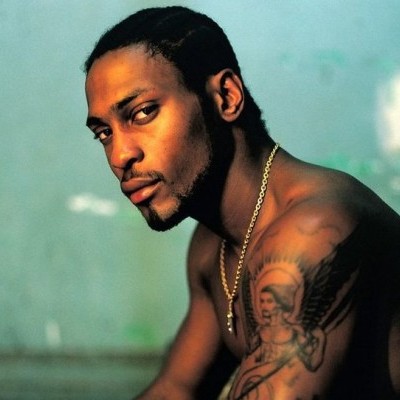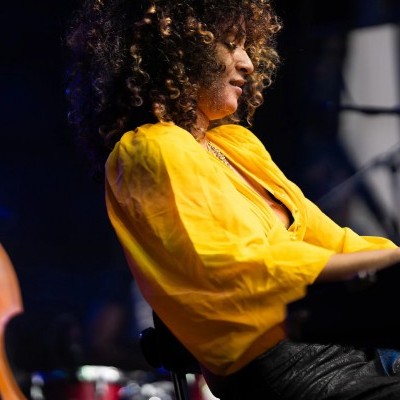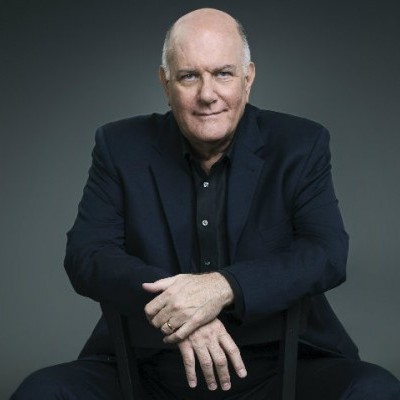Oct 28, 2025 10:47 AM
In Memoriam: Jack DeJohnette, 1942–2025
Jack DeJohnette, a bold and resourceful drummer and NEA Jazz Master who forged a unique vocabulary on the kit over his…

Keyboardist Cameron Graves’ influences include Swedish metal band Meshuggah.
(Photo: Rob Shanahan)Answering the phone at his San Fernando Valley home, Cameron Graves apologized for not picking up the first time. “I was working out on piano,” he said. “You have to keep the chops up.”
Anyone who has heard Graves, whether with Kamasi Washington on The Epic, as a part of Stanley Clarke’s touring band or leading his own quintet, knows just how serious those chops are. His new album, Seven (Mack Avenue), is full of ferocious ostinatos, shimmering arpeggios and powerfully percussive left-hand lines.
Not only are the benefits of classical training evident, but there’s also the sort of shapeshifting virtuosity that comes with being equally fluent in jazz, rock and Indian music.
“I just have a wide variety of influences, man,” he said. “I got fanatically into tabla when I was like 19, 20 years old. And for about three years, I would practice tabla for like seven hours a day, every day.”
That, oddly enough, led him to metal, although that music isn’t often linked with the likes of Ali Akbar Khan or Zakir Hussain. But tabla drumming is built around complex polyrhythms, often played at fast tempos. Thanks to his knowledge of tabla, Graves said, “I could hear that in the music. Indian tabla rhythms and math metal and speed metal have a similar type of rhythmic structure.”
There’s also a parallel with Afro-Cuban music, which likewise is built around polyrhythmic cells. He pointed to the Swedish metal band Meshuggah as an example. “There’s a lot of 7 over 5, or 5 over 4, but in the Afro-Cuban way, where you don’t really hit the ‘1’ a lot, or you infer the ‘1,’” he explained. “A lot of thrash metal, and what they call ‘djent,’ took from that.”
Hence “thrash jazz,” the descriptor Graves devised for his own sound. “I wanted to write my favorite music, which is metal,” he said. “I wanted to figure out, how can I write this for piano?
“That’s when it came to me: Write a simple classical minuet. Because if you take the band away, it kind of sounds like that. The left hand has the accompaniment and the right hand has the melody. It’s is similar to Carl Czerny, or some of those short Chopin preludes.”
Graves’ band builds off that structure, with Max Gerl’s bass shadowing his left hand while guitarist Colin Cook alternates between right-hand melodic lines and unison riffing. On Seven, the band pivots between written and improvised sections, with the sound centered on piano.
“We’re rooted, we are in this rhythm,” Gerl said from Los Angeles, referring to composed sections. “But then it can be so fluid whenever [Graves is] venturing out. That very much stems from the influence of the group Meshuggah.”
Where Graves parts company with the Swedes, however, is distortion; Graves and Gerl keep their tone clean and crisp. “I think when it came time to do the mixing, they wanted the left hand and the grooves to be as smooth as possible,” Gerl said. “Take my word for it—it’s like putting your left hand in a blender, doing these lines that he comes up with on bass.” DB

Jack DeJohnette boasted a musical resume that was as long as it was fearsome.
Oct 28, 2025 10:47 AM
Jack DeJohnette, a bold and resourceful drummer and NEA Jazz Master who forged a unique vocabulary on the kit over his…

D’Angelo achieved commercial and critical success experimenting with a fusion of jazz, funk, soul, R&B and hip-hop.
Oct 14, 2025 1:47 PM
D’Angelo, a Grammy-winning R&B and neo-soul singer, guitarist and pianist who exerted a profound influence on 21st…

Kandace Springs channeled Shirley Horn’s deliberate phrasing and sublime self-accompaniment during her set at this year’s Pittsburgh International Jazz Festival.
Sep 30, 2025 12:28 PM
Janis Burley, the Pittsburgh International Jazz Festival’s founder and artistic director, did not, as might be…

Jim McNeely’s singular body of work had a profound and lasting influence on many of today’s top jazz composers in the U.S. and in Europe.
Oct 7, 2025 3:40 PM
Pianist Jim McNeely, one of the most distinguished large ensemble jazz composers of his generation, died Sept. 26 at…

Drummond was cherished by generations of mainstream jazz listeners and bandleaders for his authoritative tonal presence, a defining quality of his style most apparent when he played his instrument unamplified.
Nov 4, 2025 11:39 AM
Ray Drummond, a first-call bassist who appeared on hundreds of albums as a sideman for some of the top names in jazz…